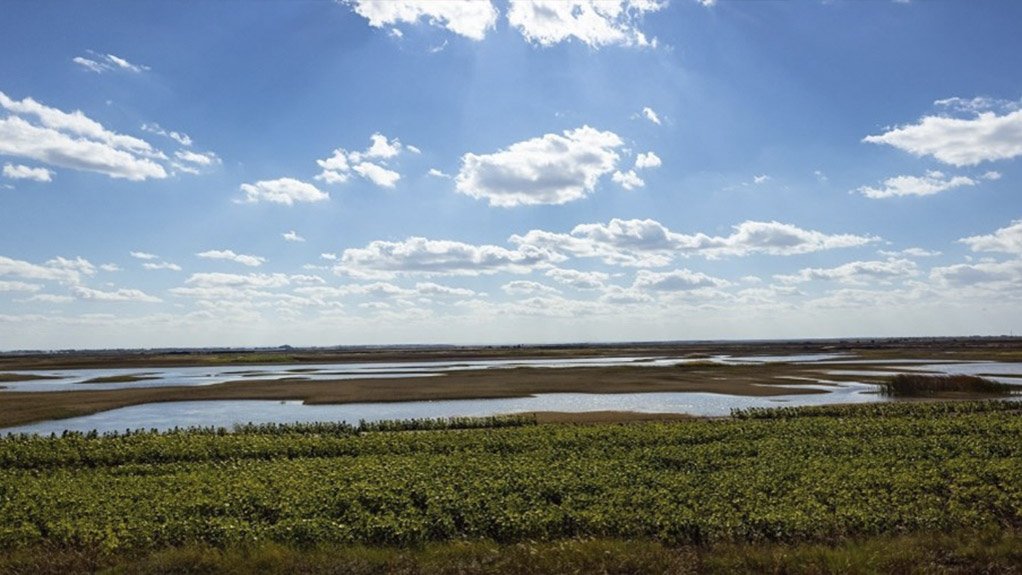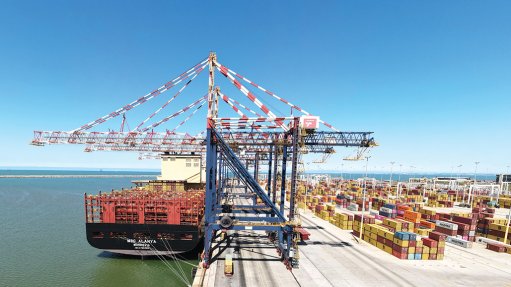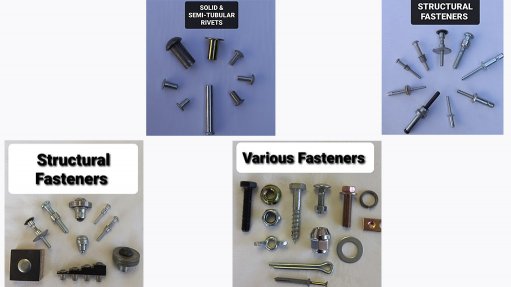Wetland Monitoring during the Construction and Post-Construction (Rehabilitation) Phases and the Methods used
This article has been supplied as a media statement and is not written by Creamer Media. It may be available only for a limited time on this website.
(Virtual Showroom): South Africa is very fortunate to have a vast array of environmental legislation which regulates unnecessary impacts to the receiving environment while at the same time promoting the principles of sustainable development. Historically, wetlands were perceived as ‘wastelands’ which were often drained, desiccated and converted to other land uses such as agriculture and infrastructure (Matthews, 1993). The loss of wetland habitat had reached epidemic proportions which necessitated the 1971 Ramsar Convention which essentially changed perceptions of wetlands, their values and promoted international protection (Matthews, 1971). In response, South African law-makers penned several pieces of legislation which promoted the protection and monitoring of wetlands with a particular focus on during a proposed development project. Some of these pieces of legislation which compel landowners and developers to carry out ongoing monitoring during the construction and post-construction (rehabilitation) phases are as follows (Armstrong, 2008):
- National Environmental Management Act (107 of 1998);
- National Water Act (36 of 1998);
- Environment Conservation Act (73 of 1989); and
- Conservation of Agricultural Resources Act (43 of 1983)
According to the National Wetland Monitoring Programme (Wilkinson et al, 2016) wetland monitoring entails the collection of specific information for management purposes and the use of these results for implementation purposes. Essentially, wetland monitoring requires the collection of relevant information, using appropriate tools to determine short-term and to predict long-term impacts of a specific development on receiving wetlands. Not all developments will impact on wetlands the same. For instance, a proposed mine may result in the direct destruction of wetland habitat which may have long-term cumulative impacts. In contrast, a proposed Wastewater Treatment Works may not directly impact on wetland habitat but may impact on water quality within the system. However, wetlands are highly interconnected with respect to ecological drivers, namely, hydrology, vegetation and geomorphology. Impacts to one driver will have cumulative impacts on another. For instance, a reduction in hydrological inputs will reduce the ability of hydrophytic plants to flourish thus reducing biodiversity and niche habitat. It is therefore of critical importance that the accepted wetland monitoring tools are applied. Generally, wetland monitoring during the construction phase of a proposed development is undertaken on a regular basis depending on the scale of the development and the recommendations put forward by the specialist. In a post-construction scenario, monitoring of a Rehabilitation Plan usually takes place which would normally have been recommended by the specialist in the initial Wetland Impact Assessment Report.
As outlined within the Wetland Management Series WET-RehabEvaluate (Cowden and Kotze, 2008), the following tools and/or methods are used to monitor wetlands:
- Assessment of Wetland Integrity using the WET-Health Tool (Macfarlane et al 2020).
- Assessment of Wetland Ecosystem Service Deliver using the WET-EcoServices (Kotze et al, 2020).
- Groundwater Elevation Levels using a Soil Auger.
- Vegetation Species Composition using vegetation transects.
- In situ or collection of water quality sample for analysis where conditions permit.
The WET-Health Tool is a powerful and robust method of determining a wetland’s ecological health by assessing the ecological drivers mentioned further above. The tool provides for two (2) levels of assessment. Level 1 provides a very basic overview for input into Water Use License or Environmental Authorisations and Level 2 is used for Wetland Offsets and Monitoring (Macfarlane et al 2020). The Level 2 approach allows for more refined and in depth land cover change modelling and mapping for input into the tool.
Changes in land cover during the construction phase of a development are able to be mapped accurately and imported into the tool to determine the ecological impacts on wetland drivers and to determine any changes in ecological health over the life span of the construction phase. Any significant deviations from the baseline during the construction phase can then be mitigated or rehabilitated to avoid further impacts. This tool can also be used to determine the ecological health of a wetland following the finalisation of the construction phase. This can then be compared to the baseline assessment and inform additional rehabilitation measures to be implemented within the post-construction Rehabilitation Plan.
The WET-EcoServices Tool assesses the ability of a wetland to provide a suite of sixteen (16) ecosystem goods and services (Kotze et al, 2020). Different types of wetlands supply different levels of ecosystem goods and services (Kotze et al, 2020). It is important to continuously monitor these during the construction phase to determine if there any losses to the ability of wetlands to supply these services as a result of impacts from the development. Any impacts to ecological drivers may impact the wetland’s ability to provide ecosystem goods and services. The outcomes of this tool can also be used to compare the provision of ecosystem goods and services following the completion of construction to baseline results to inform the Rehabilitation Plan.
The results of the ongoing WET-Health and WET-EcoServices monitoring can be used to derive Hectare Equivalents which is a quantitative measurement on ‘intact’ or ‘functioning’ wetland area (Cowden and Kotze, 2008). This can also be used to compare wetland integrity before and after the construction and rehabilitation phases are complete. This will provide a holistic measure of whether mitigation and rehabilitation measures during construction and rehabilitation were successful.
Supplementary methods to augment the abovementioned tools include Groundwater Level monitoring using auger holes. Hydrology is the main driving force behind wetland formation. Any changes in water inputs, whether surface or groundwater will impact on wetland integrity. It is therefore important to continuously monitor groundwater levels to determine wetness zones and identify any reductions in groundwater input potentially as a result of construction activities. Vegetation transects can be used in conjunction with groundwater levels as a reduction in water availability will reduce the ability of wetland plants to survive and thrive. Vegetation transects can also monitor any ingress of alien and invasive plant species as a result of construction activities.
Where applicable, water quality samples can be collected from within wetlands where sufficient water is available to do so. This will provide a comprehensive understanding of baseline water quality parameters and ongoing monitoring throughout the construction and post-construction phase will identify outliers and allow for relevant management measures to be implemented.
Environmental Assurance (Pty) Ltd. (ENVASS) offers a wide range of Environmental Monitoring and Specialist services which can be utilised at your operations.
Comments
Press Office
Announcements
What's On
Subscribe to improve your user experience...
Option 1 (equivalent of R125 a month):
Receive a weekly copy of Creamer Media's Engineering News & Mining Weekly magazine
(print copy for those in South Africa and e-magazine for those outside of South Africa)
Receive daily email newsletters
Access to full search results
Access archive of magazine back copies
Access to Projects in Progress
Access to ONE Research Report of your choice in PDF format
Option 2 (equivalent of R375 a month):
All benefits from Option 1
PLUS
Access to Creamer Media's Research Channel Africa for ALL Research Reports, in PDF format, on various industrial and mining sectors
including Electricity; Water; Energy Transition; Hydrogen; Roads, Rail and Ports; Coal; Gold; Platinum; Battery Metals; etc.
Already a subscriber?
Forgotten your password?
Receive weekly copy of Creamer Media's Engineering News & Mining Weekly magazine (print copy for those in South Africa and e-magazine for those outside of South Africa)
➕
Recieve daily email newsletters
➕
Access to full search results
➕
Access archive of magazine back copies
➕
Access to Projects in Progress
➕
Access to ONE Research Report of your choice in PDF format
RESEARCH CHANNEL AFRICA
R4500 (equivalent of R375 a month)
SUBSCRIBEAll benefits from Option 1
➕
Access to Creamer Media's Research Channel Africa for ALL Research Reports on various industrial and mining sectors, in PDF format, including on:
Electricity
➕
Water
➕
Energy Transition
➕
Hydrogen
➕
Roads, Rail and Ports
➕
Coal
➕
Gold
➕
Platinum
➕
Battery Metals
➕
etc.
Receive all benefits from Option 1 or Option 2 delivered to numerous people at your company
➕
Multiple User names and Passwords for simultaneous log-ins
➕
Intranet integration access to all in your organisation





















